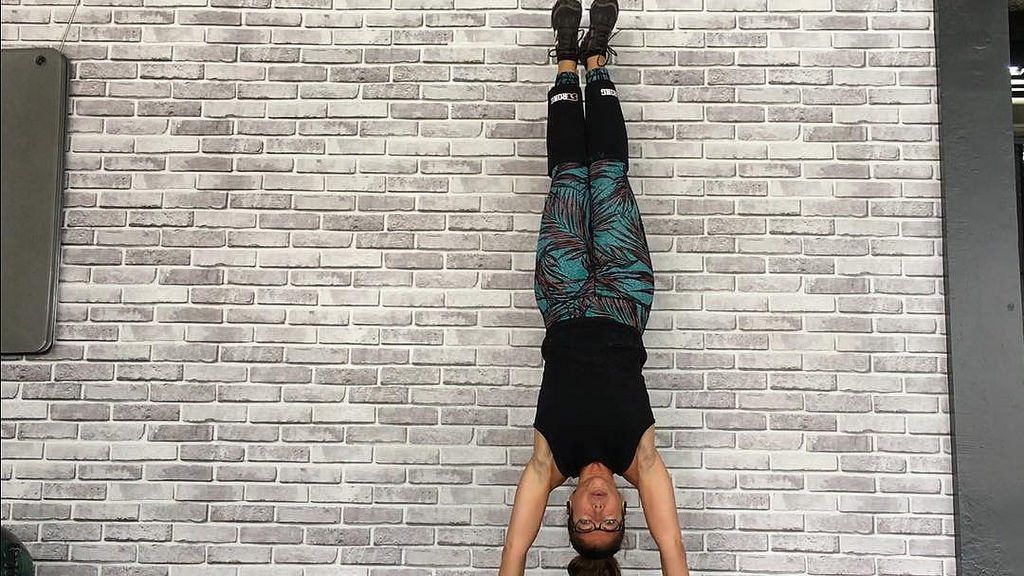
Level UP: Getting Strong and Lean (on a Vegan Diet)
I always used to think that you can’t lose weight and get stronger at the same time.
I was wrong
In the last four months I’ve lost almost 8kg (I went from 65/143lbs to 57kg/125lbs at 160cm/5’3″) and made major strength gains in my squat and deadlift, as well as bodyweight work like pull-ups and pistol squats, while maintaining strength in bench (always my weakest lift).
How did I do it?
Actually it wasn’t too complicated. I basically made four essential shifts in my eating habits, and continued my powerlifting training as planned by my awesome coach, Ten. Here’s how it all started:
 I had a little panic at weigh-ins at my competition in January. You see, for at least a year I had been holding steady at around 61.5kg every time I stepped on a scale. And I knew that the USAPL has an under 63kg weight class, so I always kind of thought of myself in that category. And, even though this particular meet was “open” weight class for women, I was mentally placing myself in the under 63kg class.
I had a little panic at weigh-ins at my competition in January. You see, for at least a year I had been holding steady at around 61.5kg every time I stepped on a scale. And I knew that the USAPL has an under 63kg weight class, so I always kind of thought of myself in that category. And, even though this particular meet was “open” weight class for women, I was mentally placing myself in the under 63kg class.
(A little background: all strength sports (powerlifting, olympic weightlifting and strongman) operate on a weight class system. You don’t compete against everyone there, or even just by gender, because generally speaking the more you weigh, the more you can lift. So, there are weight classes – you may have noticed when watching weightlifting in the Olympics – and you only compete against the other people in your class. This particular meet didn’t have any weight classes for the women, it was just “open”, so all the women competed against each other, regardless of weight.)
So, to be totally honest, I didn’t really pay attention to my food or weighing myself in the last few days up to the meet. And then I stepped on the scale on the day of the meet: 64.8kg. Yeah. That was not a good feeling. Not only was I way over the weight class I had mentally put myself in, but I had gained over 3kg since the last time I weighed myself, which was just before the winter holidays (which we spent in Australia, and I will admit, I did eat and drink a lot, but that’s a lot of weight to put on in 3 weeks). Now of course, the scale at the meet could have weighed heavy vs my scale at home, but still. That’s quite a jump.
Lesson learned: when competing in a weight class, keep your eyes on the scale. Duh. I should have done that anyway, but at least for this meet, it didn’t matter. But, now that I knew better, I would have to do better.
Step 1: Set a Goal
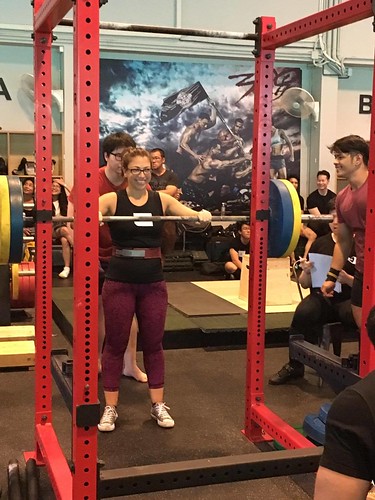 Since I wanted to compete in a USAPL meet while I will be in the US this summer, I decided to take this opportunity to cut weight. Since it has been (well, until delicious Australia) so easy for me to maintain 61.5 for the last year or so, I thought I could try for the 57kg weight class. I would have at least 6 months to lose 8kg, which is plenty of time.
Since I wanted to compete in a USAPL meet while I will be in the US this summer, I decided to take this opportunity to cut weight. Since it has been (well, until delicious Australia) so easy for me to maintain 61.5 for the last year or so, I thought I could try for the 57kg weight class. I would have at least 6 months to lose 8kg, which is plenty of time.
But, since it’s so common to lose strength while losing weight – you don’t lose exclusively fat, unfortunately, some muscle goes too – and since I’ve never dropped below 60kg ever as an adult (getting under 60kg would be getting rid of those “last 10 pounds” which is notoriously hard), I knew I would need some help. Luckily I found an amazing (online) nutrition coach, Anastasia Zinchenko, who is also a competitive powerlifter (for the GB team) and vegan! A perfect match in my opinion!
Step 2: Make New Habits
When you first start something new like this, it can all feel so overwhelming. There are so many different pieces that have to change and you feel like you have to tackle them all at once. It’s intimidating. But, you make little changes over time, and all those habits add up to where they become routine and you don’t even think about them any more.
This is intended as an initial overview of the things I’ve learned (and made habits). I’ll follow up with some more detailed posts in the future – and please let me know what questions you have so I can help!
Ok, here we go:
Level 1: Understanding Vegan Protein
For the last two years (as I’ve been learning about, and working towards, a whole-foods, plant-based diet) I have been prioritizing beans (usually paired with a complex carb like rice) as my main source of protein. However, it wasn’t until I started tracking my macros that I realized that beans (and quinoa!) are very high in carbohydrates. So, if you’re trying to cut weight, by keeping protein high, while still leaving room in your calories for enough food to make you feel satisfied, beans are often not the best choice.
Once I figured this out, I started exploring more high protein low carb sources like:
- firm tofu for scrambles or a stir fry or marinated and baked
- silken tofu to mix into a variety of things similar to the way you might use yogurt, in a smoothie, for example
- tempeh to marinate and bake into nice crispy strips for my salads
- seitan, the king of vegan protein, which I now make at home and use in everything
- nutritional yeast (sounds gross, but is actually awesome) to sprinkle on anything that needs a cheesy flavor
- TVP (textured vegetable protein) which is like a replacement for ground beef
- Protein powder to mix into things like smoothies, “nice” cream, or “milkshakes” (I like Vega brand, but I’ve been branching out / limited by what’s available in Bangkok, so I use Sunwarrior a lot)
- PB2 (or any kind of defatted nut flour) – basically peanuts ground up with the fat removed
Generally speaking, I try to eat at least one of these sources with every meal. I still love beans, but I try to save them for a special occasion or plan them a bit more carefully so that I know I’m getting enough protein before I fill up with other foods.
Side note: I’m also a very lazy cook. I like to make meals that take less than 20 minutes (chopping included) so I wasn’t going to be making something complicated with these proteins, just a quick simple meal that got me enough protein, with not too many carbs. Here are some of my go-to meal inspirations (I don’t use recipes for these anymore, they are just the ones that helped me get started):
- Tofu scramble
- Buddha bowl (usually on a bed of greens rather than rice) – I eat this every day for lunch
- Tofu “egg” salad
- Dahl and protein crepes
- Stir fry green veggies & seitan
- Marinated tempeh and baked tofu (on anything – depending how you cut it, you can put it into a sandwich or on a salad or in a stir fry, I make a batch on the weekend and use it all week)
- Zucchini noodles & shakshuka sauce with seitan
- Homemade seitan (make a big batch on the weekend, freeze and use all week as you would meat)
- Hickory Smoked “Turkey” seitan (this is huge recipe (and my current favorite) – it will last me at least two weeks)
If you like the sound of these, I store all my recipes in Flipboard, and you can see them here, and I’ve started a YouTube playlist for (mostly high protein) vegan cooking.
Level 2: Tracking & Weighing Food
This is the secret to fat loss, at least it was for me! It was something I resisted for many years because it just felt like too much work. In the end, it’s actually pretty easy, it’s become a habit and I don’t even think about it any more (and that’s just in six months, I think Anastasia has been tracking for years).
Here’s the thing: If you don’t actually know what you’re eating, what the calorie and macro content is, you have absolutely no data to base your decisions on. You can cut out whole food groups (like sugar) in an effort to lose weight (which you probably will because you will also reduce your calories without realizing it), but you won’t actually know how to manipulate the food you want to eat when your sugar cleanse is over.
So, long story short, if you want to lose weight and it’s not happening, track. I use an app called My Fitness Pal because that’s where most of my friends are, but I know that are several other popular ones like Chronometer and Lifesum that do the same thing (and from what I hear with a much nicer user interface).
It sounds like a burden to record the food you eat, and I’ll be honest, it was not easy at first, but it really only took two weeks to generally figure out how it works and to build habits that have become very easy to sustain. The issue with tracking that makes it hard is that you have to know how much your food weighs so you can track accurately, which means you need a food scale (like this) and you need to measure. Everything. At least at first.
You need to weigh everything at first because, unless you have some experience with this in the past, you really have no way of knowing how much 50g of kale is or 100g of silken tofu. And to track your food properly, you have to put the amount of each item too. This was by far the hardest part for me at the start. It just seemed like a barrier to cooking food to measure everything.
Here are the tips I learned that made weighing and tracking so much easier:
- keep pen and paper in your kitchen (a magnet on the fridge would be perfect) where you can jot down food amounts while you’re cooking to enter into MFP later
- even better, put your recipe into MFP before you start to cook, as this way you can decide if there are some adjustments you need to make before you prepare the meal (a good example would be removing excess oil – so many recipes call for so much unnecessary oil, and even dropping from 2tbs to 1tbs makes a huge difference)
- find meals that you like and eat them regularly so that you get to know how much the ingredients weigh without having to use the scale
- use the recipes feature to store (you guessed it) recipes in MFP, so you can just pull up a serving at a time if you meal prep or frequently eat the same thing
- when you make a recipe for the first time, figure out how many servings you’re going to eat it in, and how much each serving weighs and include the weight in the title of the recipe (weigh the total, then portion out your serving) – this makes it much easier to store left overs and eat them later. For example, when I make seitan, I usually eat a 75g serving at a time, so when I cook a batch, I cut it up into 75g servings, easy! But, if it’s, let’s say soup, I can’t always store each serving separately so I weigh out a serving and when I make some later in the week, I just remove that amount and re-heat.
- enter all of your meals in MFP before you eat. This helps you avoid the surprise that you’ve eaten too much and there’s nothing you can do. Plus, as you’re get more comfortable with macro breakdowns, you will start to notice small changes you can make to eat more of what you like and you’ll be able to manipulate your daily meals to make every day a “perfect” day of eating.
- there are very small things you can change about every recipe to make them macro friendly, I find it much easier to put the meal into MFP and manipulate the recipe there before cooking so I know what I’m making is going to turn out to be exactly what I want!
Level 3: Manipulating Macros
Once I had gotten over the hurdle of the logistics of weighing and tracking, the challenge of meeting my daily calorie and macro goals actually became, in a strange way, fun. Having real data to make decisions on made it so much easier to make good choices in my eating and helped me be aware of the calorie and macro content of food I had considered healthy for so long. Instead of just guessing about what I could or should eat, now I know.
Plus, now that I’ve been tracking for a good chunk of time, I can really play around with what I eat so that I can fit in something I would consider a treat every single day. And often those treats are protein rich, so not only do I love eating them, but they’re also “good for me”.
Here are some of my favorites:
- protein nice cream: basically just frozen banana, almond milk, protein powder and cacao blended until smooth (although I love adding cinnamon and sometimes dark chocolate chips or crumbled cookies if I have some extra carbs)
- protein non-dairy milk shake: similar to the nice cream, but replace the banana with lots of ice, so easy and refreshing
- protein brownie: almond flour, banana or flax egg, protein powder, almond milk, and cacao microwaved for about a minute makes a surprisingly tasty mug cake!
- BCAA slushy: mix your favorite flavor BCAAs in a shaker bottle and put it in the freezer, shaking every hour or so, makes an almost zero calorie sweet treat!
Here are some things that have really helped me:
- Generally speaking, I shoot for 30g of protein at every meal, and I prioritize protein over fats and carbs (meaning when I plan my meal, I think about the protein first).
- I know I like something sweet at the end of the day, so I always make sure to save some macros for a protein rich treat after dinner – like the items listed above.
- I love fruit, but they’re really high in carbs, so I check the macros first and then choose the fruit that fits best for the day, for me, frozen raspberries are the best!
Level 4: Consistency & Habits
Something I need to remind myself on almost a daily basis is that every day doesn’t have to be perfect. It’s more about building good habits and mindfully eating on a regular basis, than it is about getting your numbers to zero every day.
What I’ve noticed in recent weeks is that the choices I’m making on a daily basis have become habits. I’m not using willpower, I’m not thinking about or deliberating every item I eat, I’m not even thinking about what I’m going to eat, because it’s all entered the day before. Over time, I’ve built up lots of very small habits, that all combined create a healthy lifestyle.
Plus, I’ve done all this while traveling regularly for work (another post on that coming up), and for vacation (two weeks in Italy, my food paradise, where literally every day was planned around our meals) and weekend brunching here in Bangkok. I’ve become mindful of my eating, which allows me to make good choices when I’m out, as well as when I’m at home.
Before I started, it felt overwhelming, like there was no way I could possibly do all these things. But I started with just one step at a time, and once the first thing became “normal”, I added a second, and so on. Now, all of these little habits make it easy to make healthy choices everyday. I never feel restricted and I never feel hungry (in fact, most days I find it hard to eat all my calories).
Step 3: Mark Progress
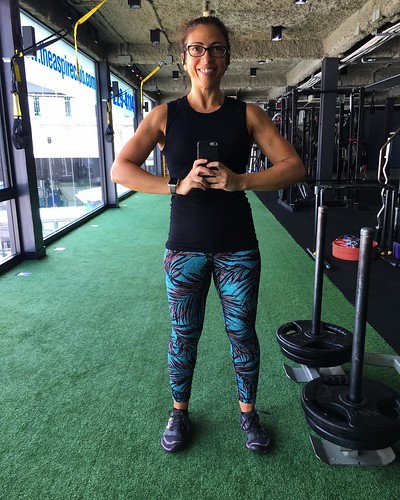 Yesterday I weighed myself and came in at 56.6kg. I did it!
Yesterday I weighed myself and came in at 56.6kg. I did it!
Plus, a few weeks ago I tested my 1RM and my squat went up by 10kg in four months. TEN. That’s a lot. My deadlift went up by 5kg. And that was without peaking, without being all pumped up for a meet, just a random day at the gym. I am going to pretend like bench doesn’t exist here, but my 1RM stayed the same. At my meet I hit S90kg/B55kg/D105kg. So, now I’m at S100kg/B55kg/D110kg.
(Background: powerlifting is about moving as much weight as you can for one rep. At a competition you get three tries, so for your first attempt you start with a lighter weight than you want to max out at, and move up in increments for the next two attempts. When you test to see how much you can lift for one rep it’s called a one rep max or abbreviated as 1RM. There are three lifts performed: squat, bench, deadlift. Generally speaking, it’s harder for women to put on upper body muscle so bench can be the weakest lift – and it definitely is for me.)
In all honesty, this was not a struggle. It was a learning curve, for sure, but it wasn’t hard. I never felt hungry or angry or frustrated. I took each day at a time, learned a little bit, and made new habits.
Final Thoughts
Thinking back to my lifestyle before I made the decision to cut weight, I was still a very healthy person, I just didn’t have any data to base any of my decisions on and I was basically flying blind, trying to make good choices without actually knowing if I was. Now I feel so confident that I know exactly what I’m eating, how it makes me feel, what it does for my training, and what I need to do to feel and lift my best.
And honestly, if I can do it, you can too!
All you need to do is take the first step and get started!
If you’ve made it this far, what are you still wondering about? What questions do you have? What are the roadblocks in your way? Or, what strategies have worked for you?
I’m so excited to share all of this with you! I feel like it’s been such a huge (and fascinating) learning curve, I really want to help as many people as I can (with my own limited knowledge), so please, drop a question in the comments and let me know how I can help!
Photo Credits:
- Working on my handstand hold by Kim Cofino, CC licensed on Flickr
- #vegan #gainz by Kim Cofino, CC licensed on Flickr
- My first powerlifting meet!(1) by Tosca Killoran, shared with permission, CC licensed on Flickr
- My first powerlifting meet!(2) by Tosca Killoran, shared with permission, CC licensed on Flickr
- Zoodles in Shakshuka by Kim Cofino, CC licensed on Flickr
- Vegan Chicken & Broccoli by Kim Cofino, CC licensed on Flickr
- My first Buddha bowl by Kim Cofino, CC licensed on Flickr
- My new favorite treat by Kim Cofino, CC licensed on Flickr
- Another meal I want to put on repeat (in Italy) by Kim Cofino, CC licensed on Flickr
- These leggings make me smile by Kim Cofino, CC licensed on Flickr
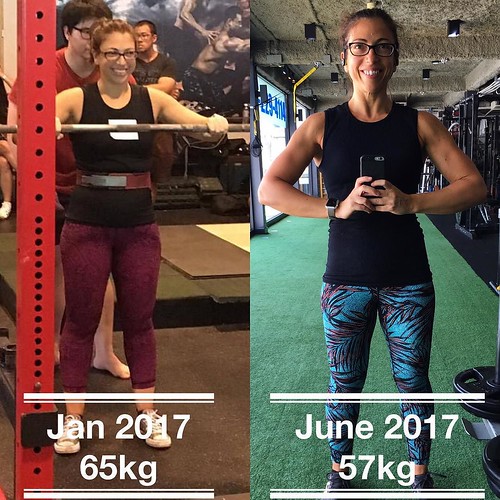
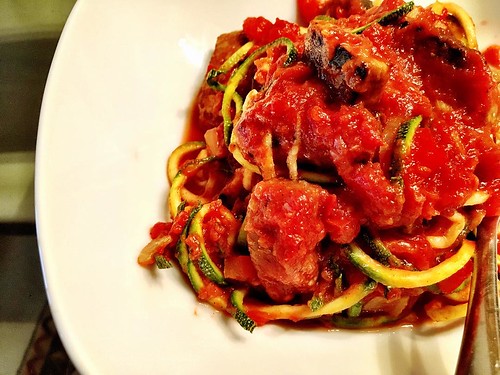
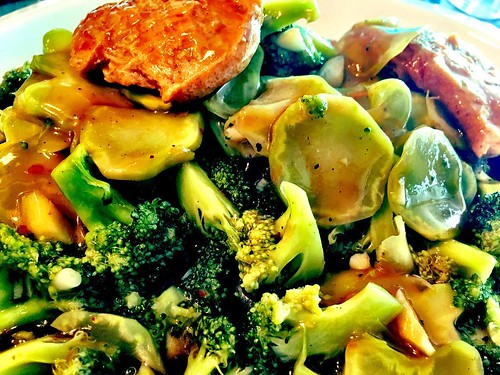

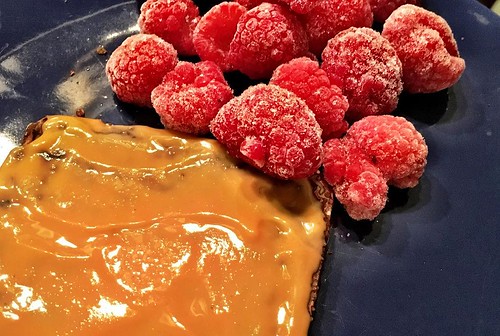
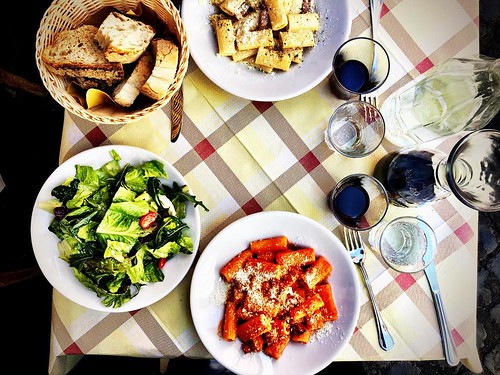
3 thoughts on “Level UP: Getting Strong and Lean (on a Vegan Diet)”
Hi Kim,
I followed your link from the fb Vegan Women’s Body Building group to read your article. Excellent advice! I am 5’4″ at 145lbs (55 yrs). I was doing Jamie Eason’s 12 week Lean Body Challenge and transitioned to Vegan during it. The Challenge just ended. I derailed at the lean out phase because it exhausted me and I believe it was my nutrition. I want to continue lifting to maintain as much muscle as possible but want to lose fat first. My midsection is my trouble spot. After I lean out I will build later. My question is should I figure my macros from calories that will maintain my desired/goal weight? I also want to keep my fat at 25 grams. Is keeping fat to 25 grams realistic? I plan on starting the 12 week challenge over today.
Many thanks for your time and advice!
Hi Jama,
I’m so glad you found my blog post helpful! I’m not a nutritionist, so this is just based on my personal experience (and I can highly recommend Anastasia, as I mentioned in this blog post, if you’d like to hire professional guidance).
Basically, if you want to lose weight, you have to eat in a caloric deficit. As I wrote in my post, what helped me the most was changing my ratio of protein to carbs – I used to eat way more carbs, but Anastasia helped me realize that more protein makes me feel more full and keeps my strength up. So, a good general rule of thumb is keeping your protein at 1g per lb of bodyweight, and then splitting up your carbs and fats based on what works best for you and what you like. I prefer to have more carbs than fats, but other people like to be higher in fats. Whatever works best for you!
Good luck!